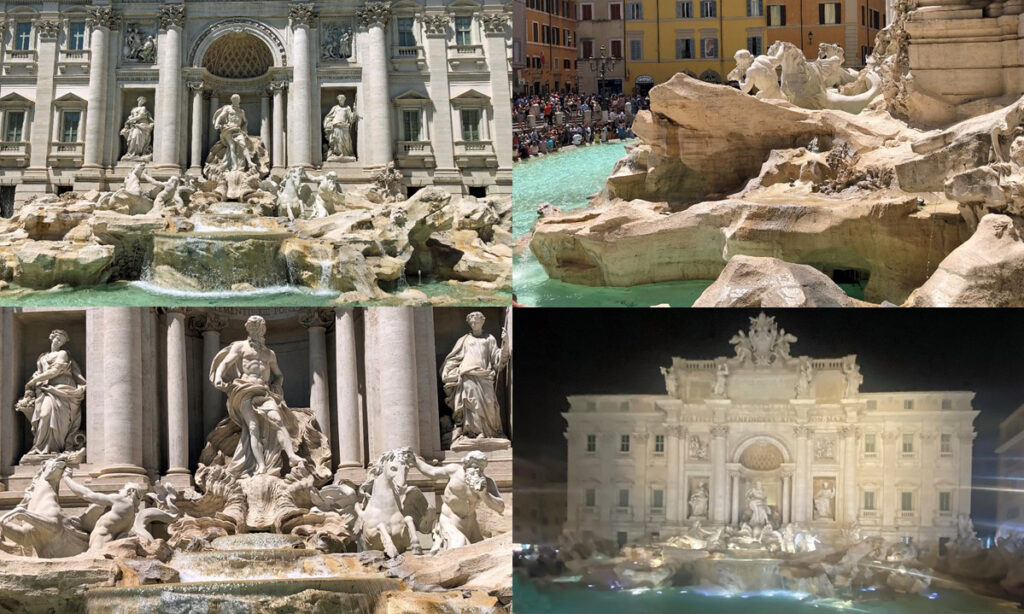I am writing this column in Rome, the subject of the next several columns. May and early June are perfect times to be in Rome, with high temperatures in the low 80s and lows in the 60s. Today, we visit the Trevi Fountain, the most famous fountain in the world.
Since 19 B.C., aqueducts have carried fresh water to Rome from mountains to the east, with fountains at their ends. In 1732, Pope Clement XII initiated a competition for a design of a new fountain at the end of the Vergine aqueduct in an area now called “Trevi” because three streets (“tre vie”) converged there. Nicola Salvi, a Roman architect, won the competition with a design combining a fountain with a newly colonnaded façade of Palazzo Pali, a Roman Palace. After Salvi’s death in 1751, Giuseppe Pannini oversaw the project. When completed in 1762, the Trevi Fountain was 160 feet wide and 85 tall. At the center of the fountain is an enormous statue by Pietro Bracci, depicting the god Oceanus beneath a triumphal arch riding a sea-shell chariot pulled by two horses, one angry and one calm, both managed by tritons. In niches beside Oceanus are statues representing Health and Abundance, qualities associated with the fountain’s water. Until the water from the fountain was declared unsafe, Trevi Fountain provided water for the Vatican, carried there in barrels.
The Trevi Fountain was featured in the movie “Three Coins in the Fountain,” which promoted the idea that throwing three coins into the fountain can guarantee a return to Rome and marriage to an attractive Italian. Each year visitors who flock to the fountain both day and night toss in more than one million dollars’ worth of coins, which are given to local charities. No statistics are maintained on how many wishes are actually granted.
